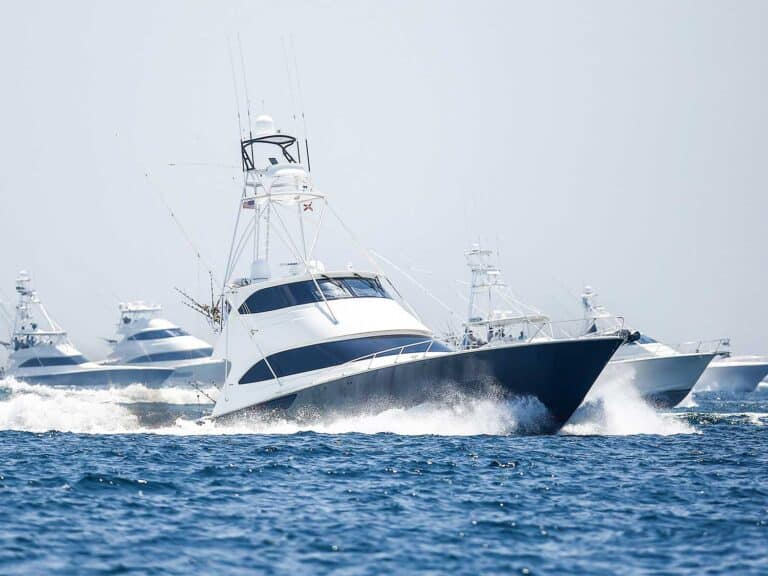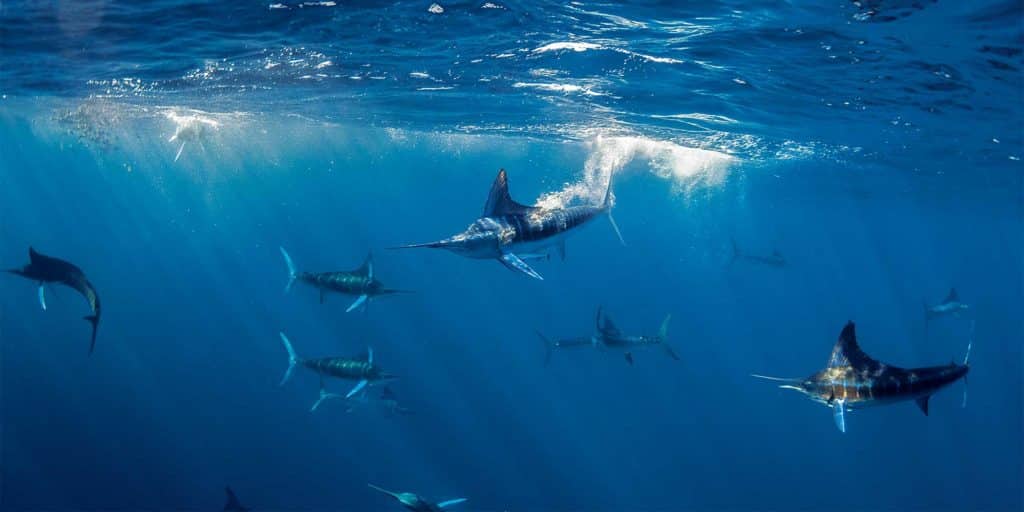

Have you ever noticed that fantastic fishing spots are nearly impossible to get to? It’s easy to understand that the more remote a location is, the less fishing pressure it receives. A prime example: Magdalena Bay, on the Pacific coast of Mexico’s storied Baja Peninsula. Its relative inaccessibility has allowed it to remain one of those rare places that time has virtually forgotten.
Mag Bay is about the size of San Francisco Bay, and the largest villages in the area are Puerto San Carlos—population: 5,500—and Lopez Mateos, which are a bit rustic to say the least. These are commercial fishing villages, where local knowledge is passed down from father to son. Close to 100 miles of mangrove-lined channels and shoreline encircle the area, and where the mangroves stop, the desert takes over. There is no dependable water source in the region, which has greatly restricted development; there are also no big-boat marinas, very few hotels and a minimal supply of reliable fuel. It’s one of Baja’s last frontiers, but there are few other places on Earth where so many billfish congregate so predictably.
No one just stumbles onto Magdalena Bay, unless they are cruising from San Diego to Cabo San Lucas, Mexico, and can spend a few days fishing along the way. Most of the sport-fishing boats that hit Mag Bay come from Cabo and run the 170 or so nautical miles north.
These boats have to be self-sufficient and will spend their evenings anchored down at one of the three acceptable anchorages. No one plans on hopping into town for supplies or entertainment, because it just doesn’t exist.
Nick Smith has been fishing Mag Bay for years. His captain, Chip Shafer, runs Smith’s custom 64-foot Bayliss Old Reliable from Costa Rica or Guatemala up to Cabo San Lucas in September, and they usually stay through December.
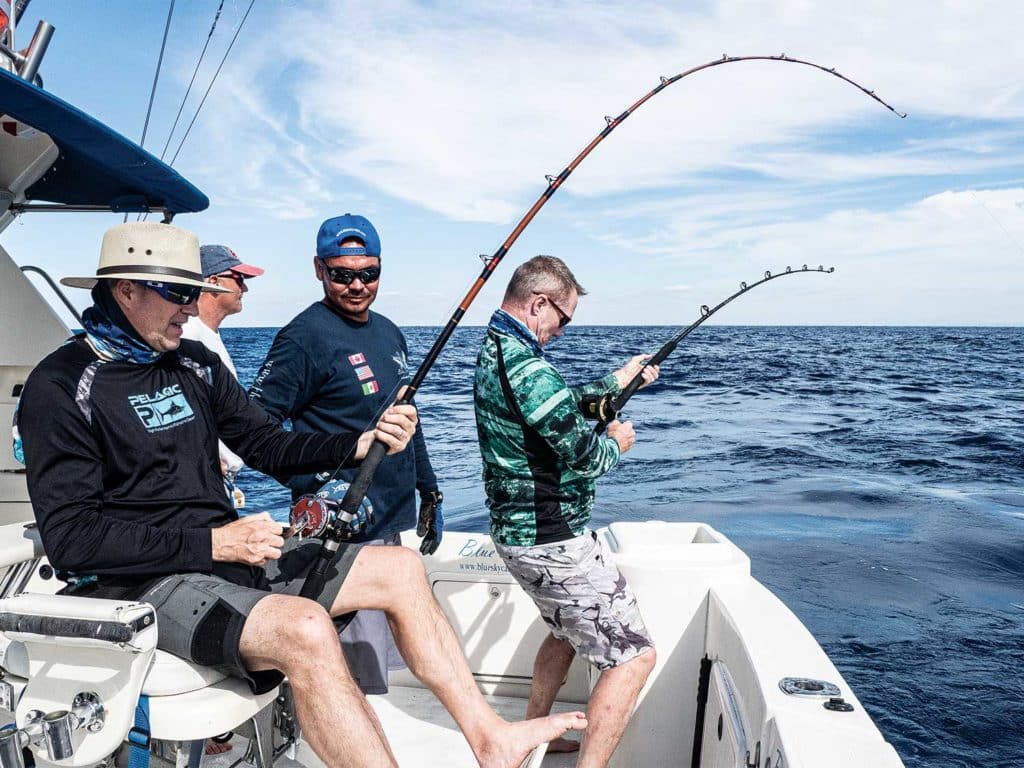
Smith designed the boat specifically for long-range trips: 2,300 gallons of fuel, two generators, two watermakers, and backups for pretty much everything.
When the bite is on, Shafer will run the boat up from Cabo San Lucas, while Smith flies from his home in Florida to Cabo, then drives six hours to Puerto San Carlos where a local guide will ferry him out to the boat. From Cabo, it’s an 18-hour trip at a fuel-saving 9 knots. It’s possible to get diesel fuel in Mag Bay, but they bring it to you by panga; it’s more economical and safer to just keep your cruising speed low and complete the entire trip on one load.
Difficult as this adventure might seem, you can catch more striped marlin in a week here than you can in a half-dozen seasons in Southern California. In 2018, Smith and Shafer spent 12 days in Mag Bay, releasing 317 striped marlin on fly. Smith has released more than 5,000 billfish on fly in his career. That’s all he likes to do, and he does it way better than anyone I’ve ever fished with. He’s a perfectionist: Every leader is tied to IGFA specifications, with a 20-pound-test tippet and 12 inches of shock leader. On one day last year, they raised 143 marlin and released 50, all on fly tackle. They claim that they could have caught more, but everyone got tired of rigging up flies!
On the Ball
One of the most amazing sights at Mag Bay is watching hordes of striped marlin chase schools of Spanish sardines and tinker mackerel to the surface. The baitfish school together for protection; the ones on the outside are the first to get eaten, so naturally everyone wants to be in the center. The result is a living, moving ball of fish, with marlin and often sea lions in pursuit. The fish push the bait to the surface, then attack it from below. The frenzy attracts frigate birds that swoop in from above. If you spot a collection of frigates in Mag Bay between late September through early December, they are most likely on striped marlin actively balling bait. As you get closer, you can spot the marlins’ fins slicing the surface. It’s simply incredible to witness.
This same phenomenon happens in Isla Mujeres, Mexico, with sailfish; the boats look for frigates close to the surface, then run to them. Often there will be a half-dozen boats circling one bait ball. There are so few boats in Mag Bay that there is never any fighting over bait balls—but Shafer doesn’t chase them at all because he feels that it puts the fish down. Instead, he simply trolls a standard East Coast spread with two dredges, two squid chains and a pair of hookless lures or ballyhoo, and all fish are teased to the boat. He’s found that these striped marlin don’t stay on the bait ball close to the boat, and the motor noise while maneuvering into position is counterproductive.
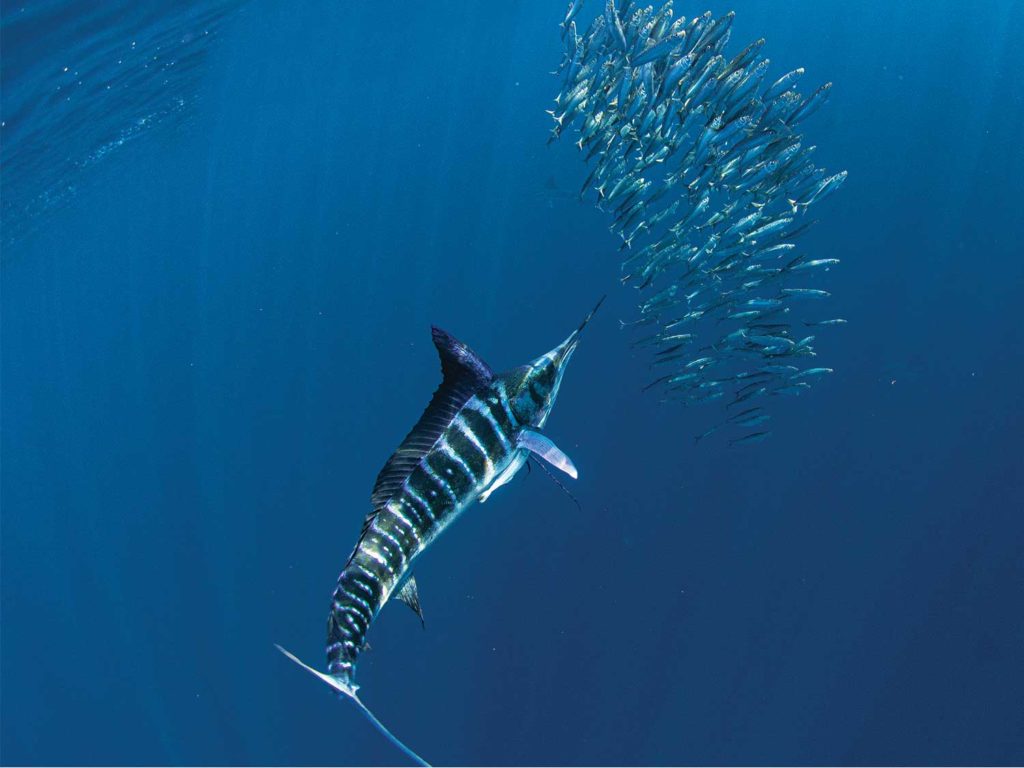
Most of the striped marlin are between 80 and 125 pounds; rarely will you see one surpassing 150 pounds, making them perfect fish for light tackle or the fly rod. Smith prefers tube flies with a single barbless hook: When the fish runs, the tube fly slides up the line, so there is a good chance to get it back when the fish is released or breaks off. Because his goal is to release as many billfish as possible without permanent injury, the single hook is key: It won’t impair the marlin’s ability to breathe or feed like a double-hook rig can. A barbless hook also will usually fall out within a few hours.
I’d heard stories about Mag Bay’s incredible striped marlin fishing from Smith and others for years, but not having a 60-plus-foot sport-fisherman at my disposal made it impossible to get there myself. In 2018, Eli Martinez of SDMdiving.com set up a trip to Mag Bay for photographers. He runs adventure trips all over the world to photograph everything from sharks to orcas to anacondas. It took me about two minutes to sign up for the expedition—finally, I was going to Mag Bay.
Executing the Plan
Our plan was simple. Martinez had located lodging for us at the Hotel Alcatraz in Puerto San Carlos and secured a guide that ran a 25-foot panga. There were five of us on the trip and we had five days to chase bait balls. Each morning, we would meet the guide and run across the bay in the panga, where we then met a boat trailer “ferry” to take us over land and across the peninsula to the Pacific, which saved us hours of running time. When we were dumped back in the water, we still had another hour or so run out to the fishing grounds. I don’t think we ever saw more than three sport-fishing boats in a day, but there was clearly a specific area where all the action was taking place.
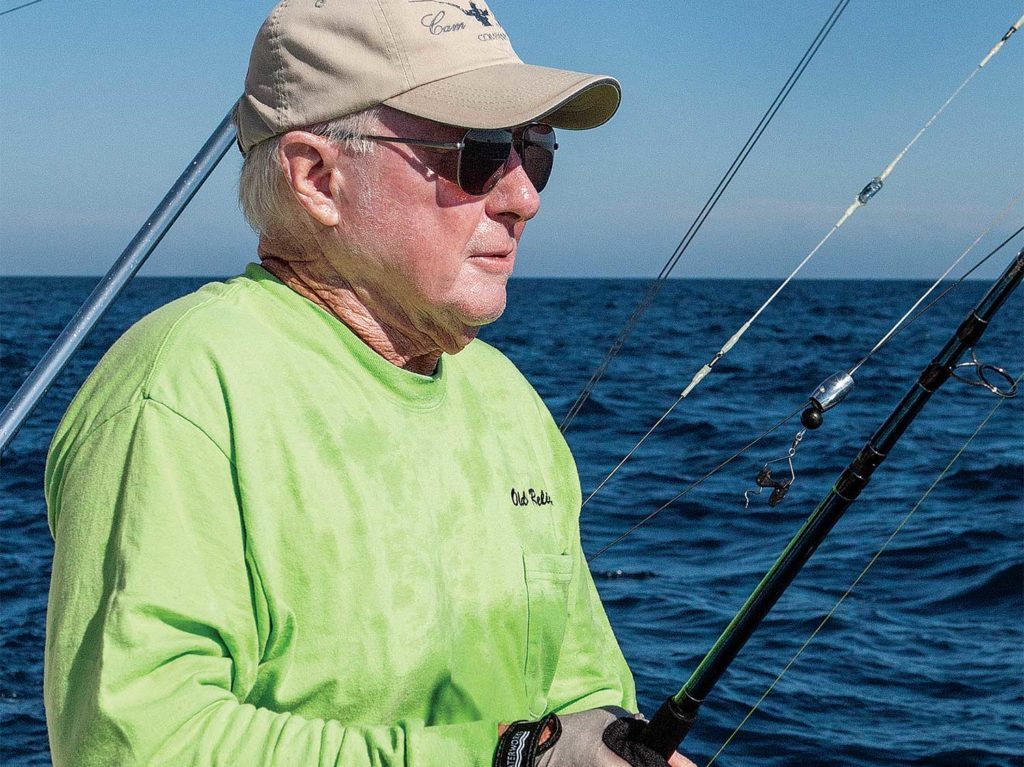
We weren’t fishing, but were chasing birds and bait instead. In the smaller boat, we could run ahead of the bait/bird/marlin frenzy and hop into the water. The in-water viewpoint was very interesting. In the morning, the bait schools were bigger and were running together as a group, rather than trying to hide in a ball. We’d jump in and the bait would quickly dash over to see if our boat offered any protection—which it didn’t—then they would take off again. We would have a few moments to snap photos before everything got out of range. I’d try to follow but had no chance to catch them unless they turned back our way.
What I found very interesting was that as I was swimming after the now-disappeared commotion, several striped marlin would come up to the surface and swim next to me. At one point there were almost 20 marlin around and below me, casually swimming along. They weren’t lit up and there wasn’t any bait in sight, they were just following the ones that were actively feeding. There were marlin everywhere, not just on the bait balls.
**Learn more about striped marlin.
In the afternoons we still found the bait balls, but they were smaller and probably tired. We’d run ahead of them and the five photographers in our group would plop into the water; the bait would swim over and use us as cover. These static bait balls provided the best photo opportunities.
On one dive, there were five snorkelers in a semi-circle and a family of sea lions swimming opposite from us. A half-dozen marlin were below, attacking the bait within a few feet of our group. The sea lions also were feeding on the bait when they weren’t nipping at the stripeys or growling at us. Eventually, the marlin would tire of the diver/sea lion combination and leave the area. One time the marlin had moved on and we floated with six sea lions and what was left of the bait ball for probably 15 minutes—when a new batch of marlin suddenly appeared and everything started anew.
There also were two small center-console outboard boats fishing in our vicinity. Several times, they were following the same bait balls that we were and I could see the angler on the bow hook up with a fly rod. Other times, there was a guy on the bow with a spinning rod, throwing some kind of lure—he also was hooking up regularly. Next year, I’m going to track down the center-console guys and book a few days of fishing to go along with the diving.
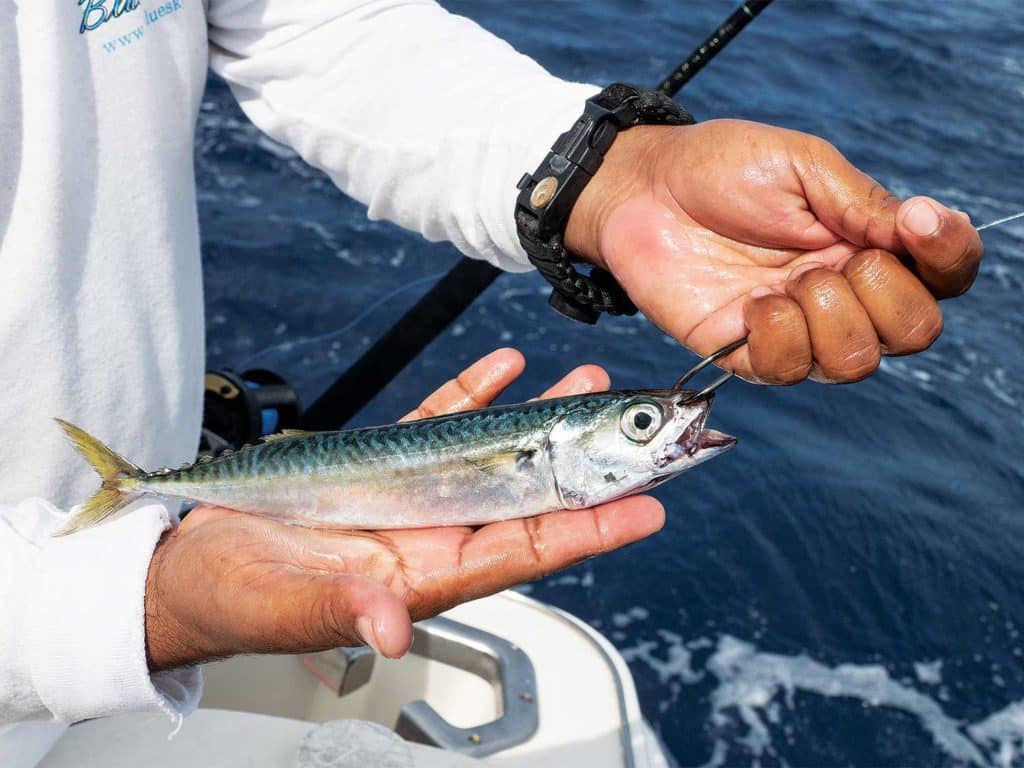
Marlin on the Finger Bank
Our stay at Magdalena Bay was both exciting and educational, but there was still more to come on this trip. I was traveling with retired Marine Col. Hunter Ledbetter who had a friend named Jim Korchinski who owned a charter boat in Cabo. We had a day or two to spare, so Korchinski offered to take us out on his 43-foot Riviera, Blue Sky. His captain was Juan Jose Abaroa Flores, who ran the Mucho Loco for the Rolling Stones for many years back in the 1980s.
Korchinski had been toying with the idea of running up to the Finger Bank, some 60 nautical miles north of Cabo. This would mean a five-hour run, and we would have to leave the dock by 4:30 a.m. Ledbetter and I jumped at the chance and we found that the long run was not a problem at all—we simply hopped in the bunks and went back to sleep. We woke up to a ham-and-egg breakfast and to find that the crew had already caught a healthy supply of live bait.
The Finger Bank is so named because of three areas where the bottom rises from 3,000 feet to around 300; on the charts, they look like fingers. I imagine that the upwellings push the bait to the surface and thus the marlin follow close behind. When we arrived, there were several other boats on the horizon and it wasn’t hard to figure out where the fish were.
The Finger Bank is Mag Bay Lite. We spotted the frigate birds working the surface; when we got close, we could see the marlin in hot pursuit. Blue Sky’s trolling tackle was heavier than I normally use—most of their light tackle was on one of Korchinski’s other boats, but they did have several smaller outfits that were used to catch bait and mahi, so we rigged them up with 5 feet of 60-pound-test leader and a 9/0 circle hook.
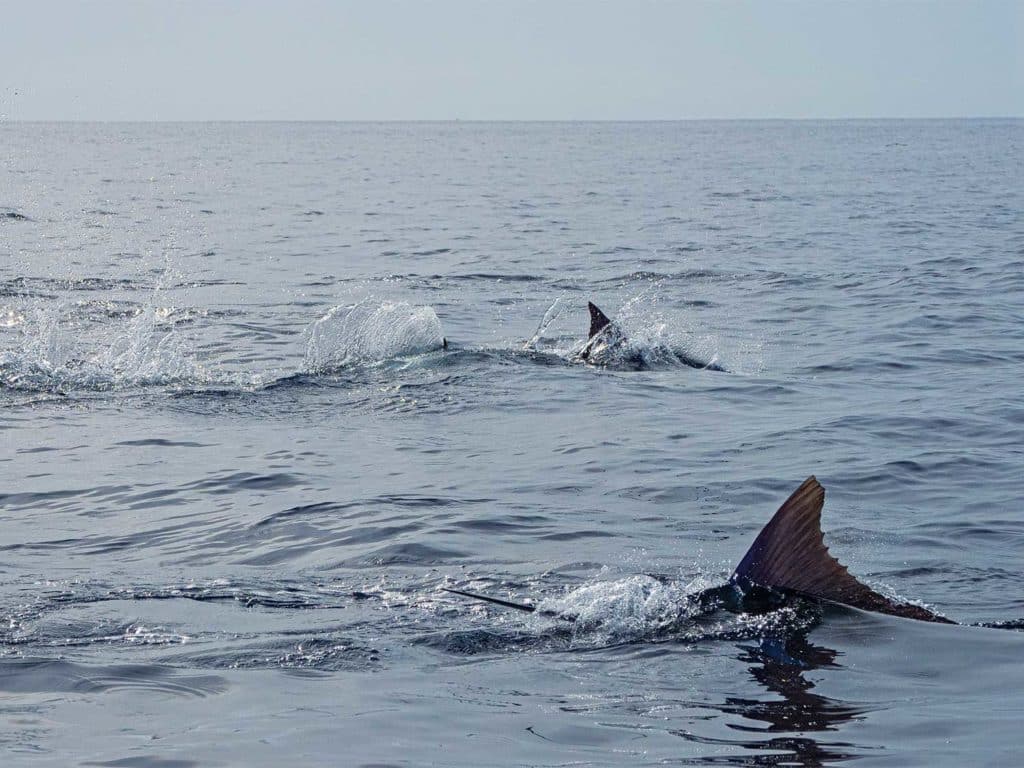
The plan was to run up beyond the feeding marlin and cast a live bait into the fray. There were several boats using this technique and most were hooking up regularly. However, I could see Shafer’s point: Too much chasing was going to have an effect on the fish.
That day, we released 14 stripeys out of 20 bites, most on the lighter bait rods. I even caught one on a Penn Senator 113. I hadn’t seen one of those reels in 30 years, so it was a bit retro but lots of fun. The boats that overnighted at the bank reported 30-plus releases a day.
“Rumor has it that the record for conventional tackle releases at Mag Bay is close to 200 striped marlin in one day, which pretty much sums up this amazing fishery.”
Smith told me they were at the Finger one day when there were marlin tails everywhere and everything imaginable was crashing a bait ball the size of an Olympic swimming pool: birds, dolphins, whales, marlin, mahi. It lasted for several hours, then suddenly everything stopped. On other trips, he had watched dozens of marlin finning on the surface as they cruised slowly downsea.
Smith believes that the marlin at the Finger Bank are harder to catch on fly than those at Mag Bay. Striped marlin are not easy to tease to the boat to begin with, and the ones at the bank seem to be well-fed and a bit more jittery—probably because of the number of boats that chase them around. The fish at Mag Bay are also well-fed, but the lack of boat harassment and sheer numbers of marlin make it an exceptional destination, especially for fly fishing.
Rumor has it that the record for conventional tackle releases at Mag Bay is close to 200 striped marlin in one day, which pretty much sums up this amazing fishery. There is nowhere else like it on Earth—you just have to figure out how to get there.





